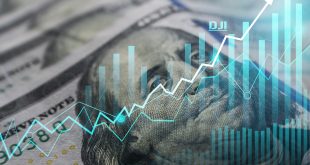The US Bureau of Labor Statistics (BLS) will release the May jobs report on Friday, July 8 at 12:30 GMT and as we get closer to the release time, here are the forecasts by the economists and researchers of 10 major banks regarding the upcoming employment data.
Expectations are for a 270K rise in Nonfarm Payrolls following the 390K increase in May. Meanwhile, the Unemployment Rate is set to remain unchanged at 3.6%.
CIBC
“A slowdown in the interest-sensitive construction and real estate sectors could have combined with worries about domestic demand, as inflation erodes purchasing power, to slow hiring to 200K in the US in June. With a rise in the participation rate possible, the unemployment rate could have remained at 3.6%, which could also reflect slower job growth in the household survey, as it’s closer to its pre-pandemic level than its payrolls counterpart. Wage growth likely continued at a 0.3% monthly pace, well below growth in prices. We’re below the consensus which could be negative for the USD and see bond yields fall.”
RBC Economics
“We expect an increase of 300K jobs in the US in June fuelled by the recovery in close-contact service industries. As in Canada, tight labour markets will continue to limit employment growth. The unemployment rate is expected to hold steady at 3.6%.”
TDS
“Employment likely continued to advance firmly in June but at a more moderate pace after three consecutive job gains of around 400K in March-May. We also look for the UE rate to stay unchanged at 3.6% for a fourth straight month, and for wage growth to remain steady at 0.3% MoM (5.0% YoY).”
SocGen
“Employment gains are slowing, and we view this as inevitable as more of the unemployed have found jobs and the unemployment rate has dropped well below 4%. Strong employment, however, is how we interpret an increase of nearly 300K jobs in a month. Trucking, delivery, food services and healthcare remain areas of recovery and growth for job markets. We expect the unemployment rate to edge back down to 3.5% for June, possibly very soon. A rising labor force participation rate (more people entering the labor force) is one pro-growth factor that can steady the unemployment rate, preventing a decline, even when the economy is strong. Later, as businesses reduce their demand for labor, smaller job gains are why the unemployment rate stabilizes or begins to rise.”
Citibank
“Citi: 290K, prior: 390K; Private Payrolls – Citi: 240K, prior: 333k; Average Hourly Earnings MoM – Citi: 0.4%, prior: 0.3%; Average Hourly Earnings YoY – Citi: 5.1%, prior: 5.2%; Unemployment Rate – Citi: 3.5%, prior: 3.6%. We expect a continued slowing in the average monthly pace of job gains, with 290K jobs added in June. This would still be a strong monthly increase, but in line with expectations that job growth should slow over the course of this year. Much of this expectation has been based on the idea that lack of supply of workers will limit the pace of hiring but the impact of weaker growth expectations could also start to weigh on demand for workers.”
Wells Fargo
“We forecast NFP to rise 240K in June and look for the unemployment rate to hold steady at 3.6%. Labor demand is showing signs of topping out, albeit at an elevated level, as evidenced by the job openings rate hovering around 7.0% since the beginning of the year. With a larger pool of available candidates, small business compensation plans have softened. We forecast average hourly earnings to rise 0.3% month-over-month in June.”
NBF
“Payrolls may have increased 225K. The household survey is expected to show a similar gain, a development which could leave the unemployment rate unchanged at 3.6%, assuming a one-tick increase in the participation rate to 62.4%.”
Commerzbank
“We expect an increase of a still solid 250K. That said, it is probably only a matter of time before bad numbers come from the labor market as well.”
ING
“We think payrolls may grow somewhere in the 250-300K range, which should still be enough to keep the unemployment rate at 3.6% and wages continuing to tick higher. For us to seriously consider changing our July Fed call we would need to see payrolls growth fall with the unemployment rate moving a couple of tenths higher and wage growth showing signs of stagnating. Even then we would still probably need to see a surprisingly large decline in inflation the following week.”
Deutsche Bank
“We expect payrolls to slow to 225K but with unemployment falling a tenth to 3.5%.”

 Noor Trends News, Technical Analysis, Educational Tools and Recommendations
Noor Trends News, Technical Analysis, Educational Tools and Recommendations




